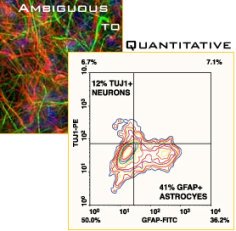A Single siRNA Suppresses Fatal Encephalitis Induced by Two Different Flaviviruses
Priti Kumar1, Sang Kyung Lee2, Premlata Shankar1*, N. Manjunath1*
1 The CBR Institute for Biomedical Research and Department of Pediatrics, Harvard Medical School, Boston, Massachusetts, United States of America, 2 Department of Bioengineering, Hanyang University, Seoul, Korea
ABSTRACT
Background
Japanese encephalitis virus (JEV) and West Nile virus (WNV) are neurotropic flaviviruses that can cause acute encephalitis with a high fatality rate. Currently there is no effective treatment for these infections.
Methods and Findings
We tested RNA interference (RNAi)-based intervention to suppress lethal JE and WN encephalitis in mice. To induce RNAi, we used either lentivirally expressed short hairpin RNA (shRNA) or synthetic short interfering RNA (siRNA). As target, we selected the cd loop-coding sequence in domain II of the viral Envelope protein, which is highly conserved among all flaviviruses because of its essential role in membrane fusion. Using as a target a species-specific sequence in the cd loop that is conserved only among the different strains of either JEV or WNV, we could achieve specific protection against the corresponding virus. However, by targeting a cross-species conserved sequence within the cd loop, we were able to protect mice against encephalitis induced by both viruses. A single intracranial administration of lentivirally delivered shRNA or lipid-complexed siRNA before viral challenge or siRNA treatment after viral challenge was sufficient for protection against lethal encephalitis.
Conclusions
RNAi-based intervention affords near complete protection from both JEV- and WNV- induced encephalitis in mice. Our results show, to our knowledge for the first time, that siRNA can be used as a broad-spectrum antiviral agent for treating encephalitis caused by multiple related viruses.
Funding: This work was supported by NIH grant U19 AI 056900 to NM and PS.
Competing Interests: The authors have declared that no competing interests exist.
Academic Editor: Clifford Lane, National Institutes of Health, United States of America
Received: September 20, 2005; Accepted: December 16, 2005; Published: February 14, 2006
DOI: 10.1371/journal.pmed.0030096
Copyright: © 2006 Kumar et al. This is an open-access article distributed under the terms of the Creative Commons Attribution License, which permits unrestricted use, distribution, and reproduction in any medium, provided the original author and source are credited.Relevant to i-Fect (TM)
"Although there is a report of the successful use of naked siRNA targeting the pain-related cation channel P2X3 to treat chronic neuropathic pain in a rat model [
28], other studies suggest that naked siRNA is poorly taken up by brain parenchymal cells [
29,
30]. Recently, a cationic lipid formulation, i-Fect (Neuromics) has been found to deliver siRNA into neuronal cells without toxicity (Dr. Josephine Lai, University of Arizona Health Sciences Center, personal communication). We tested if synthetic FvEJ siRNA (siFvEJ) complexed with i-Fect can protect mice against viral encephalitis. After confirming that i-Fect can transduse siFvEJ siRNA as efficiently as lipofectamine to inhibit JEV infection in Neuro 2a cells (
Figure 3A), we infected mice by IC injection with JEV and, after allowing 30 min for viral adsorption, injected the synthetic siFvEJ or control luciferase siRNA (siLuc) complexed with i-Fect at the same site. All mice injected with siLuc died by day 5, whereas all of the siFvEJ-injected mice survived indefinitely (
Figure 3B), suggesting that i-Fect can deliver siRNA into neuronal cells and result in protection that is similar to the lentivirally delivered shRNA."



 Protocol
Protocol Protocol
Protocol


 s
s

